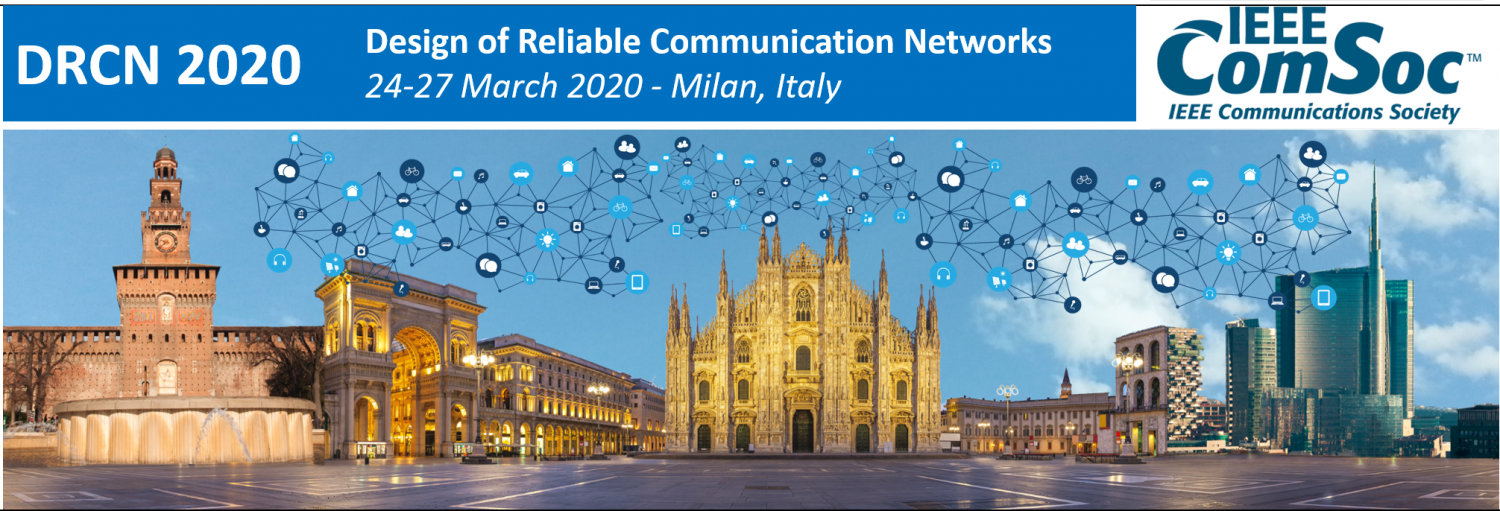Tutorial 1: Tuesday March 24, 13:45 – 15:45

Alberto Lometti, System & Architecture Senior Director, SM-Optics (SIAE Micro-Electronics Group), Italy
OTN rise, status and perspectives
Abstract: Since the first OTN standards were stabilized in 2001, technology has continued to evolve. Additional new service requirements have materialized, moving from the initial SDH centric paradigm to a more Internet-oriented Ethernet focus, to the current ongoing activities addressing all the emerging aspects of the networks of the future.
This tutorial examines how evolving OTN standards have so far provided telecom networks with a multi-service capable carrier-grade backbone infrastructure supporting lambda and sub-lambda services with guaranteed quality, and how today they are increasing the scope of the technology by addressing metro and aggregation as well as new telecom evolution trends like 5G, IoT, DC Interconnections and multi-tera optical transmission.
Biography
Alberto Lometti was born in Milan in 1959, and received the Dr. Ing. degree (cum Laude) in electronic engineering from the University of Pavia, Italy, in 1984. Since joining the Radio Links Division of Telettra S.p.a. in October of the same year he has spent his entire professional life in R&D moving from analog and digital electronic design, to ASIC design, to system and network design. Since 1991 to 1996 he led the team of ASIC designers who pioneered the introduction of SDH technology in Telettra and later on in Alcatel, after the acquisition. In 1996 he moved to system design extending progressively his responsibility across Alcatel European design centers and dealing with Optical Multi-Service nodes, Cross-Connects and WDM systems. Within Alcatel and then Alcatel-Lucent Optics Division he led the standard activity which contributed to the definition of the new Packet Transport paradigm in optical networks, made concrete by ITU and IETF MPLS-TP standard. Since November 2014 he is in SM-Optics, a company of SIAE Micro-Electronics Group, as System & Architecture Senior Director. In this role he has led the architecture definition activity of SMO new metro-WDM product line (LM1 system family).
He owns 17 patents related to optical transport topics and has authored or co-authored more than 25 papers, most of them presented in international conferences. In 2006 he has been appointed Bell Labs Fellow, the first one in Italy after the merge of Alcatel with Lucent Technologies.
Tutorial 2: Tuesday March 24, 16:15 – 17:15

Brigitte Jaumard, Professor, Concordia University Montréal, Canada
Network Defragmentation
Abstract: It is becoming increasingly important for core networks to be more flexible in order to accommodate the significant growth of cloud and smartphone-enabled applications. In such optical networks, utilization of the optical bandwidth may be fragmented depending on the increase or decrease in the number of optical path routes during operation. In this tutorial, we will discuss network defragmentation in order to achieve more effective use of the bandwidth resource by restructuring and consolidating the fragmented bandwidth, both at the optical layer and at the logical layer.
We will review the different mechanisms for dynamic and adaptive defragmentation. They include the answered to the following questions (i) How to reconfigure, i.e., optimize the combination of (re)provisioning algorithms for defragmentation, (ii) How to migrate traffic: Design connection migration method for defragmentation and try to minimize traffic disruptions. (iii) When to reconfigure: Determine the best timing of each defragmentation operation, (iv) What to reconfigure: Decide how many and which connections to be reconfigured in each defragmentation operation.And last, but not least, we will also discuss how to combine protection and effective defragmentation.
Biography
Brigitte Jaumard holds a Concordia University Research Chair, Tier 1, on the Optimization of Communication Networks in the Computer Science and Software Engineering (CSE) Department at Concordia University. Her research focuses on mathematical modeling and algorithm design for large-scale optimization problems arising in communication networks, transportation and logistics networks and artificial intelligence. Recent studies include the design of efficient algorithms for network design, dimensioning and provisioning, scheduling algorithms in optical grids or clouds, in broadband wireless networks and in passive optical networks. In Artificial Intelligence, contributions include the development of efficient optimization algorithms for probabilistic logic (reasoning under uncertainty) and for automated mechanical design in social networks (design of trust estimator tools). In transportation, her recent contributions include new algorithms for freight train scheduling and locomotive assignment subject to energy minimization, as well as machine learning frameworks for efficient cross-docking. B. Jaumard has published over 300 papers in international journals in Operations Research and in Telecommunications.
